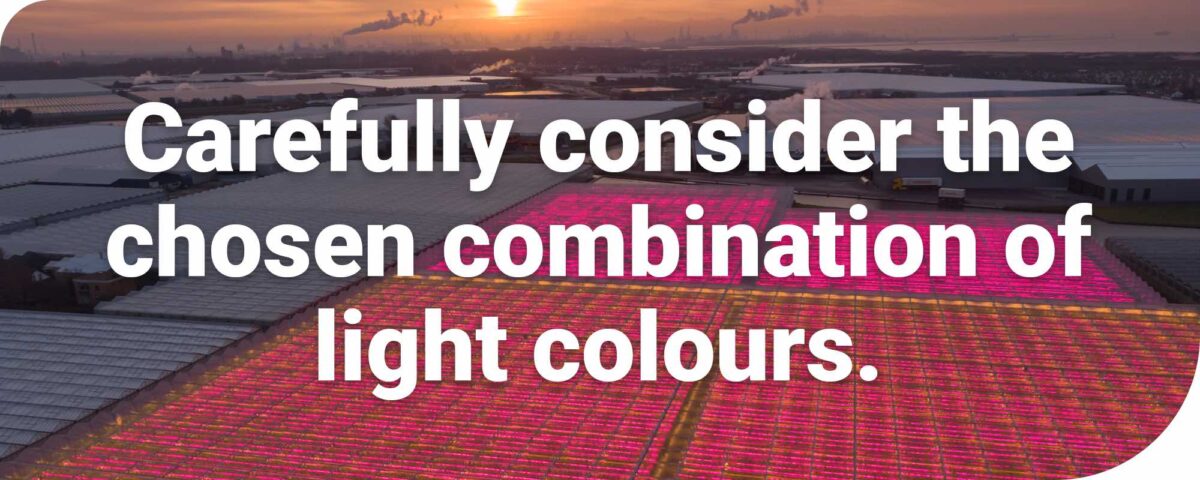The spectrum of grow light is important for both photosynthesis and the regulation of the crop. When switching to LED lighting, it is necessary to carefully consider the chosen combination of light colours.
Spectrum: Light colours

We published an e-book “How artificial lighting can optimize efficiency” to give growers more understanding about the possible ways to improve the distribution and uniformity of light in your greenhouse and learn what the best lighting strategy is for your crops.
The first two chapters of the e-book are zooming in on the various types of heat coming from lighting, including the differences between HPS and LED lighting, and the importance of matching the temperature with the available light by measuring the PAR (Photosynthetically Active Radiation).
This third chapter will explain how the spectrum of PAR light is important for both photosynthesis and the regulation of the crop. Because insights in the field of light colour are constantly improving, there are still gaps in knowledge, especially for smaller crops. Therefore, measuring your PAR light is very important.

Preview
When only HPS lamps were available for grow light, no one had to consider the light spectrum. Growers simply learned to cultivate their crops with these lamps, despite the fact that light from HPS is totally different from sunlight. There is a relatively large amount of green and yellow light, and relatively little far-red and blue.
With the current transition to LED, everything is changing because growers can now choose the spectrum very precisely. Moreover, the chosen light colours have a very narrow bandwidth. This is when things get really tricky. Light of all colours in the PAR range contributes to photosynthesis. In addition, the individual colours each have their own specific effect on the growth and development of the crop.
Chosing the right strategy in light colours determine growth and development of the crop. And although for many crops a safe combination of light colours is now known, there still is a gaps in knowledge and the insights in the field still need to increase.
That is one of the reasons controlling light colours is not that simple. You have to ask yourself a lot of questions: Did you switch from HPS to LED to save energy? What is your goal: a safe spectrum or the maximum amount of yield? What light intensity is best for your specific crop? Which amount of light colours is necessary i your greenhouse for your plants to survive? How important are the working conditions in the glasshouse?
Want to learn more?
We can say that, in order to choose the right spectrum, you should obtain as much existing information as possible. Reading the e-book about lighting will give you a good start of knowledge about a bread spectrum of lighting topics. Get the full four-part e-book, and enrich yourself with in-depth knowledge and practical examples about lighting.
Get the e-bookAbout the e-book
To understand more about the possible ways to improve the distribution and uniformity of light in your greenhouse and learn what the best lighting strategy is for your crops, we’re published an e-book that is going more into depth about the role of lighting in your greenhouse. This e-book is very useful for all kinds of growers around the world with insufficient or only just little knowledge about lighting, because the more you understand about this topic, the easier it is to spot new ways in which you can save energy without compromising on crop performance.
The e-book is written by several grow-light specialists from Plant Empowerment Implementation Partner Hortilux Schréder, who are keen to share their expert knowledge around the world. These specialists are willing to help all growers using artificial lighting more effectively and obtain the maximum results out of their usage of grow light (LED, HPS, and hybrid).
More information
